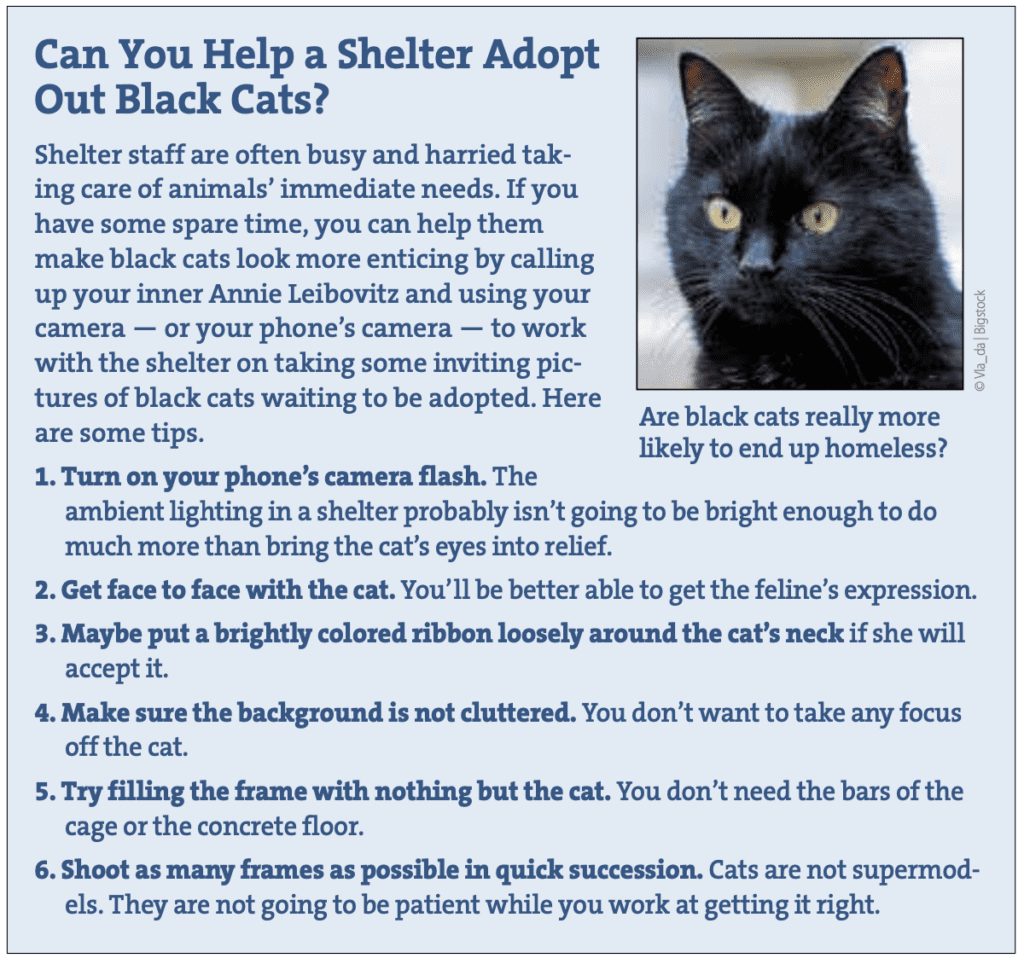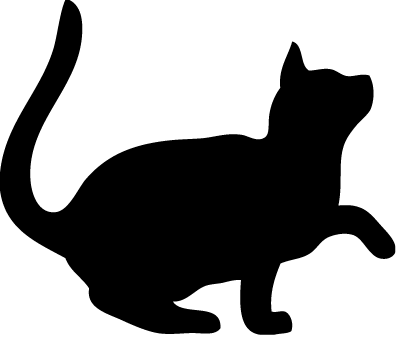“A black cat crossing your path signifies that the animal is going somewhere.”
— Groucho Marx
In Japan a single woman with a black cat is not a cat lady. She is someone said to have good luck because black cats in that country are associated with attracting good potential suitors. The cat is thought to beckon them.
Black cats are also lucky talismans in Scotland. There, some believe, prosperity is coming to anyone who finds one on their doorstep. And in Latvia, a black cat spotted in a silo portends a bountiful harvest.
But in most western cultures, black cats carry the same ominous meaning they did in medieval Europe, when people pointed them out as witch “familiars.” However you look at it, we’ve certainly invested black cats with a lot of our emotional baggage over the centuries. Here in the U.S., the “black cats are bad luck” thing has helped lead to claims that they are more likely to end up in shelters, less likely to be adopted, and more likely to be euthanized than cats of other colors. Is it true or not?
“A bit of both, actually,” says Seana Dowling-Guyer, a member of the Center for Animals and Public Policy at the Cummings School of Veterinary Medicine at Tufts University. “Some research shows that black cats are not more likely to be passed over, that it’s a perception error. But other research shows they are.”
That’s part of the reason there are so many holidays that honor black cats — to get them more attention. There’s Black Cat Appreciation Day on August 17th, National Black Cat Day on October 27th, Black Cat Awareness Month for all of October, and Black Cat Friday. It coincides with Black Friday right after Thanksgiving and is the day a number of shelters adopt out black cats at a discount. But where exactly does the fact of the matter lie?
The plight of black cats
A fair number of people who work in shelters attest that black cats are, in fact, less likely to be adopted than cats of other colors and therefore more likely to be euthanized when a certain amount of time has gone by and room has to be made for more homeless felines. There’s even a name for the problem: Black Cat Syndrome. Research would appear to back up the assertion.

In a study of nearly 8,000 cats admitted to an urban public shelter in Kentucky and published in the journal Animals, black ones were the most likely to be euthanized. Almost three out of four black cats who came to live at the shelter ended up being put down, while only 10 percent of them were adopted. Euthanasia rates for grey and orange cats were high, too, but not quite as high — and they were also a little more likely to be taken home by someone. Research in the Open Veterinary Science Journal also found that black cats are passed over, requiring the longest time to adopt. Some other studies point in the same direction.
But probably the largest investigation on the matter ever conducted came to a more nuanced conclusion. Several years ago, Dr. Emily Weiss, who served as Vice President for Shelter Research and Development for the ASPCA, looked at the records of some 300,000 cats and dogs in 14 regions throughout the United States. And she found that yes, black cats in shelters had the highest euthanasia rate — 30 percent at that time. But on the flip side, they also had the highest adoption rate — 31 percent.
What’s going on? There simply are a lot of black cats. The genes responsible for black fur are dominant. So even though a healthy proportion of black cats are being taken home by loving families, a relatively large proportion are left behind. That contributes to the perception that black cats — because they’re black and not because there are so many of them — are more apt to be sent to a premature death.
For all that, there could still be a couple of things getting in the way of adoptions of black cats.
It’s all in the presentation
One thing to consider is that because there may tend to be more black cats in some shelters than cats of other colors, they won’t stand out as much to people coming to choose a feline pet to take home. Imagine a shelter with seven black cats, four gray ones, two orange ones, two tabbies, and one white one. The black ones are just not going to seem special. But imagine if white cats were dominant and black ones were rare. That would give black cats a whole other cache — they’d be sleek and velvety instead of ho-hum.
With that in mind, it’s not just important to consider black cats in the prism of their looks. It’s also important to recognize that the most important quality in a pet is whether you’re drawn to it for its temperament and personality. Those are the things that are going to impact the bonding over the next decade or two, not the color.
Another issue is that it’s not necessarily easy for shelters to get good photos of black cats to post on their websites and social media. You need good lighting to capture the details on a black cat’s face and body. For that reason, if you’re looking to adopt and you see a photo of a black cat on a shelter’s social media platform and it doesn’t grab you, it still pays to go in and have a face-to-face with the animal. What’s lost on the screen may delight you in person.




